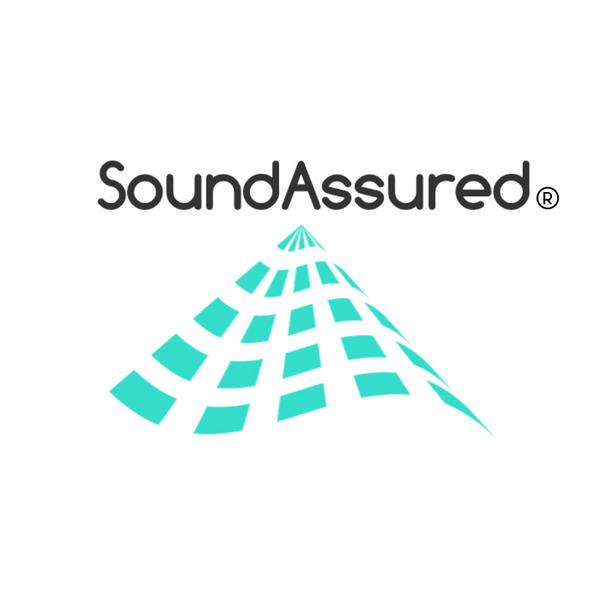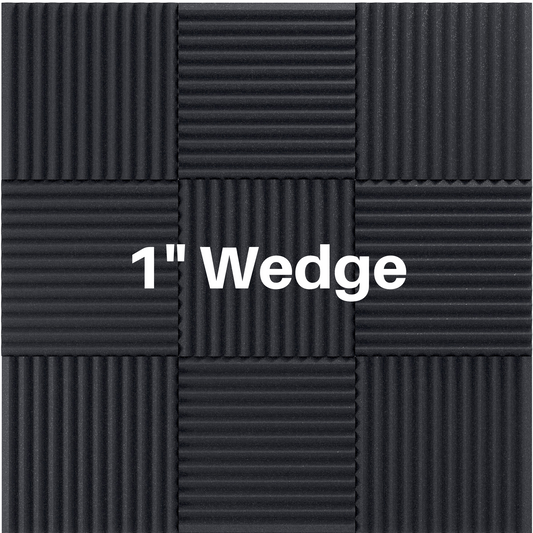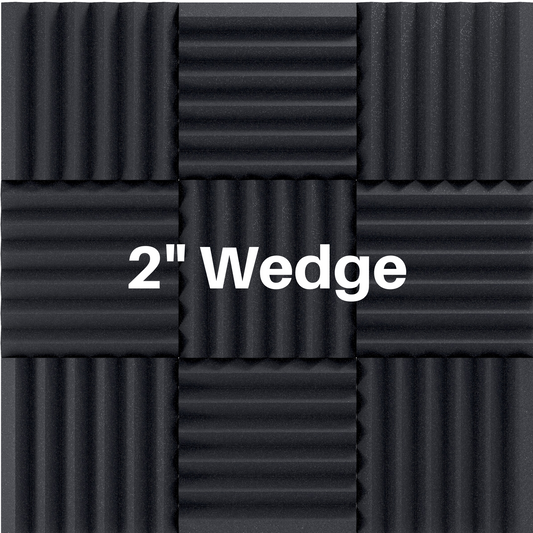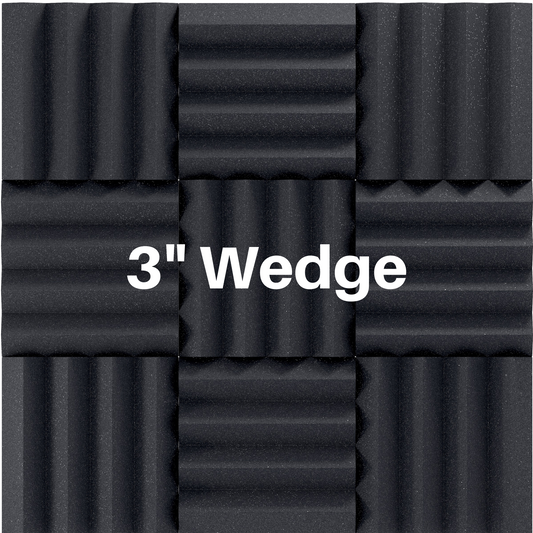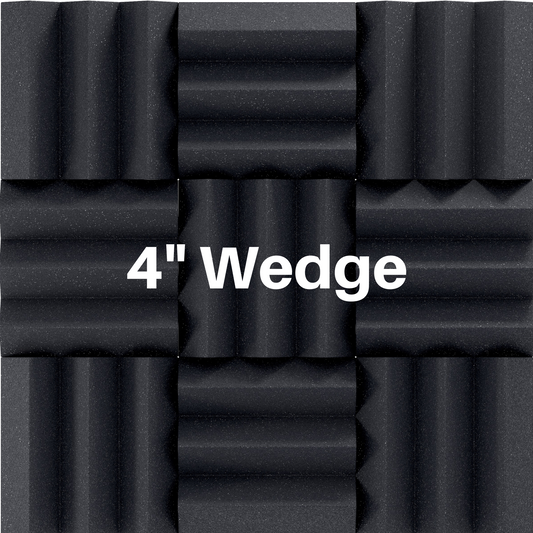How Bass Traps Work
Share
Bass traps are special, normally very thick and bulky, acoustic treatments designed to absorb the low-frequency sounds in your room. They work by absorbing these deep, long sound waves from bouncing around, which makes audio sound much better.
What Makes Low Frequencies So Tricky?
Sound is essentially energy traveling through the air in waves. Low-frequency waves are much longer than high-frequency waves. Because they are so long, they tend to build up in your room. This buildup leads to uneven bass response in the room. There can also be peaks and nulls in the bass response.
The image below shows a graphical representation of low frequency waves on the top and higher frequency waves on the bottom.
How Bass Traps Work
A bass trap looks like a thick, often triangular or rectangular panel made from materials that can absorb sound, such as foam, fiberglass, or mineral wool insulation.
When low-frequency sound waves hit the bass trap, the energy from the sound is turned into a small amount of heat inside the trap. This process keeps the sound waves from bouncing back into the room.

Types of Bass Traps
There are several types of bass traps designed to control low-frequency buildup in a room. The most common ones are porous absorbers and corner bass traps.
Porous Absorbers
These are often made of fluffy materials like fiberglass or rockwool. They are good at absorbing a wide range of low frequencies and can be placed in corners of rooms or on the wall with an air gap behind the panel. Porous bass traps can be added to the room, or built into the room.

Membrane Bass Traps
These use a thin sheet or panel that vibrates at certain frequencies. These are great for tuning to certain frequencies if a room has a specific problem frequency, but are not ideal for targeting all low frequencies.
Tube Traps
Tube traps are round, freestanding bass absorbers filled with sound-absorbing material and covered in fabric. Since they don’t need to be mounted, you can place them in corners, along walls, or anywhere bass is a problem.
Helmholtz Bass Absorbers
Helmholtz absorbers are special bass traps designed to target specific low-frequency problems in a room. They work like a bottle that “captures” certain sound waves and prevents them from bouncing around. These absorbers are great for fixing specific bass issues but need to be tuned to the right frequencies for the best results.
Corner Bass Traps
Because corners are where low frequencies tend to build up, you’ll often see bass traps designed to fit right where two walls meet. These traps are shaped to fit snugly into corners and soak up the extra bass that gathers there.
Below are some images of corner bass traps.


Where to Place Your Bass Traps
Start With the Corners
Bass builds up the most in corners, so that’s the best place to start adding traps. This includes where two walls meet, and where walls meet the ceiling or floor.
Try Other Key Spots
After treating the corners, you can improve low-frequency absorption by placing bass traps along flat walls, especially at first reflection points or areas where bass buildup still occurs. You can also try ceiling-wall intersections, as low frequencies tend to collect there as well. Testing different placements and listening for changes in clarity will help you fine-tune your setup.
Use More Than One Trap
One bass trap usually isn’t enough. Most rooms need multiple traps spread out in different corners to smooth out the sound. The goal is to achieve an even balance of bass energy throughout the whole space, not just one sweet spot.
The image below shows floor-to-ceiling corner bass traps in all four corners, along with 6” thick triangle panels on each wall for added broadband absorption.

What is the best bass trap for your room?
Size and Shape of Your Room
A bigger room may need more bass traps, or traps that can handle a wider range of low frequencies. Smaller rooms sometimes need very thick traps because there’s less space for sound to spread out, and bass waves can cause more problems within smaller rooms.
Budget and Style
You don’t have to break the bank to get decent bass traps. Even basic options can help a lot. You can also find traps in different colors and styles to match your room’s décor. Our acoustic foam corner bass traps offer good low frequency absorption at a great price!
DIY vs. Store-Bought Bass Traps
Some people build their own bass traps using DIY instructions and cheaper materials. This can save money, and if you are handy and have a few tools then you can save money. If you follow the instructions properly you can get just as good of results as buying bass traps.
Our acoustical fabric is ideal for covering DIY bass traps. The fabric is designed to be acoustically transparent so sound waves travel through, and then the insulation inside can do the absorption.
Testing Your Room
One simple test is to play a steady bass tone or listen to a familiar song. Walk around the room and notice where the bass sounds too loud or too soft. Start placing traps in those problem areas. With a bit of trial and error, you can find the right setup. I found that bass was building up by the door area in my home office, so I placed a corner trap along the wall-ceiling intersection and it solved the problem.
A free tool that you can use to test your room is Room EQ Wizard (REW). The software is free, but you will need a measurement mic to take measurements. The "UMIK-1 Omni-Directional USB Measurement Microphone" is a good options that will not break the bank.
Benefits of Good Bass Control
Clearer and More Balanced Sound
With the unwanted echoes and build-ups under control, music and speech sound more natural. You can hear the details in your favorite songs that you might have missed before.
Better Mixing and Recording
If you’re a musician or podcaster, proper bass trapping helps make sure your recordings are accurate. This means your final mix will sound better, no matter where someone listens to it.
A Better Listening Experience
From movies to gaming, good bass control makes every sound more realistic and enjoyable. You’ll find you don’t have to turn your speakers up or down all the time, and you can trust that what you hear is what you’re meant to hear.
